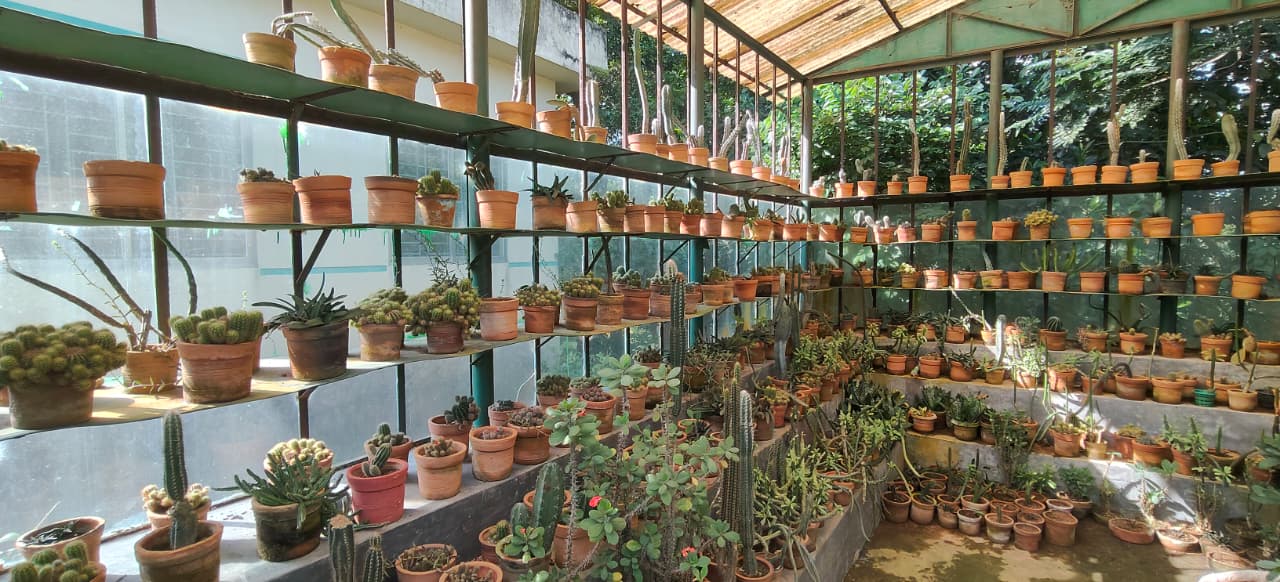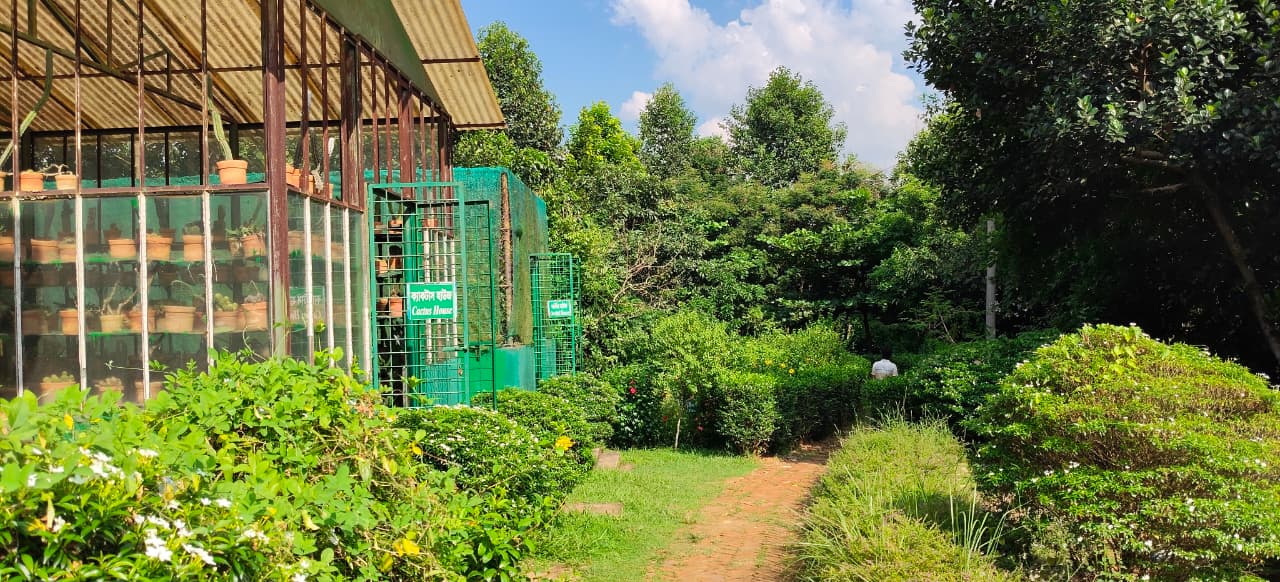News Flash
News Flash

By Delwar Hossain Akaid
CUMILLA, Nov 6, 2025 (BSS) – The botanical garden of Lalmai Hill in Cumilla is a sanctuary for endangered and extinct plant species.
Located amid the green folds of Lalmai Hill in Kotbari — one of Cumilla’s major tourist attractions — the botanical garden is the country’s third such garden.
About 76 endangered plant species have been preserved here, along with several hundred of rare and unique trees. However, due to lack of publicity, the garden has yet to gain wide recognition among tourists.
Established over 17 acres under the supervision of the Cumilla Social Forest Division, the project began in 2015 and was completed in early 2020. The garden was officially opened to visitors on November 7 of the same year.

Around 90 percent of the 76 species preserved here are rare or endangered. After Mirpur (Dhaka) and Sitakunda (Chattogram), this is the third rare botanical garden in Bangladesh. Although founded with the goals of plant conservation, research, and education, the number of visitors remains low even after five years of inauguration.
G.M. Mohammed Kobir, Divisional Forest Officer of the Cumilla Social Forest Division, told BSS that the garden was established with the aim of conserving rare species, creating a safe habitat for wildlife, promoting natural recreation, and facilitating education and research opportunities.
He said there is a plan to set up a “Forest Museum” in this garden at Lalmai Hill. Once implemented, it will become the first of its kind in the country, he said. As 90 percent of the plants preserved here are endangered or extinct, the museum will serve as an important national resource for higher education and research, he hoped.
Kobir added that a master plan had been prepared and submitted to the ministry to upgrade the garden into a national-level botanical garden, but it was not approved.
“We will resubmit the master plan to the ministry,” he said.

During an on-site visit, the garden was found to have brick-paved walkways winding through a diverse collection of plants—most of which are no longer seen in rural areas. Each tree has an identification plaque displaying its name, scientific classification, family, and characteristics.
Mohammad Mazharul Islam Chowdhury, Information Officer of the Cumilla Forest Department, told BSS that this garden, being the third rare botanical garden in Bangladesh, holds special significance.
“Here we are conserving 76 species of endangered trees along with many other common trees, vines, medicinal plants, and flowering species from different regions of the country. The development and expansion of the garden are focused on four objectives: nature and biodiversity conservation, research, education, and tourism,” he said.
Among the remarkable species in the garden are Radhachura, Nageshwar, Agar, Nagalingam, Kanchan, Ashwattha, Chandan (Sandalwood), Raktachandan (Red Sandalwood), Chalmugra, Lohakath, Chapalish, Dhup, Arjun, Mahua, Telshur, Bohera, Haritaki, Hijal, Kanak, Tamal, Ashok, Pitraj, Kumbhi, Sonalu, Parul, Jarul, Champa, Togor, Lotkon, Karamcha, wild guava, Civet tree, Bashpata, Banyan, and Krishnachura—along with hundreds of other plant species.
The garden also features a cactus house, orchid house, medicinal plant corner, special garden of rare plants, water bodies, and grasslands, all playing vital roles in preserving the environment and ecosystem.
Facilities for visitors include benches, umbrella-shaped resting sheds, separate washrooms, and other necessary infrastructure.
Located amidst the undulating terrain of Lalmai Hill, the garden greets visitors with an enchanting view of lush greenery. The chirping of birds, fluttering butterflies, and fragrant flowers delight every nature lover. A walk through the garden, whether under the midday sun or in the gentle afternoon breeze, refreshes and rejuvenates the mind.
Abdus Salam, a student of Cumilla Victoria Government College and a resident of Sadar Dakshin upazila, told BSS, “Many of the trees here can no longer be found in villages. This garden will play a vital role in teaching the new generation about the country’s natural heritage and plant diversity. However, more publicity is needed to highlight its importance.”
Lamisah Tabassum Mim, a student of Cumilla University, said, “This is a wonderful place to learn about medicinal and rare plants. It can be an ideal site for study tours and for children to learn about nature and botany.”
Mir Mofizul Islam, president of Love for Tourism Bangladesh, told BSS that the garden could play a vital role in conserving endangered plant species that are disappearing across the country. “It offers great potential for educational institutions, universities, and researchers. This initiative will enrich Cumilla both in tourism and research,” he added.
According to the garden authorities, the entrance fee is set at Tk 20 for general visitors, Tk 5 for students and minors, and Tk 400 for foreign visitors. The garden remains open to visitors every day from 9 a.m. to 5 p.m.